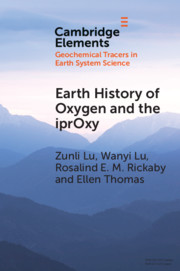Element contents
Earth History of Oxygen and the iprOxy
Published online by Cambridge University Press: 11 September 2020
Summary
- Type
- Element
- Information
- Online ISBN: 9781108688604Publisher: Cambridge University PressPrint publication: 08 October 2020
References
- 22
- Cited by

